MAKER: BAUSCH & LOMB
MODEL: UNIVERSAL
c. 1891-2
SIGNED:BAUSCH & LOMB OPTICAL CO, ROCHESTER N.Y. & NEW YORK CITY, 13267
SERIAL NUMBER: 13267
Please Click On Any Picture for a Larger Version
DESCRIPTION:
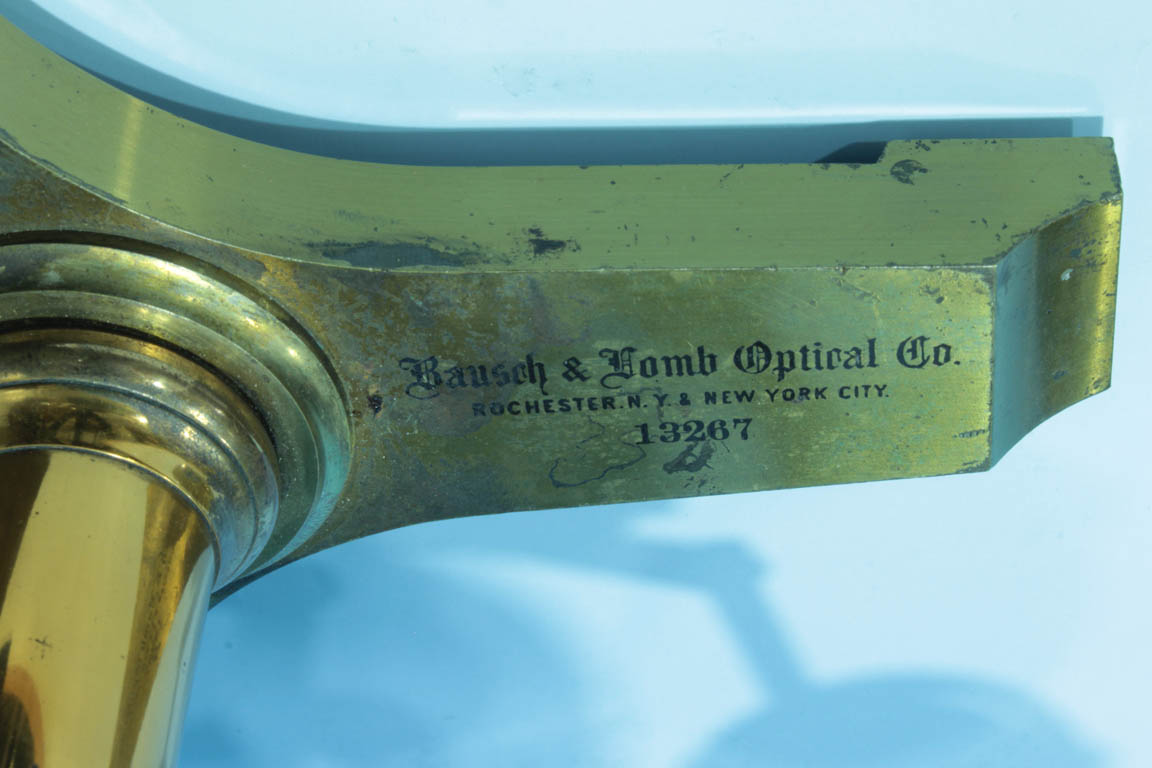 This large compound microscope is based on a flat tripod with a single pillar arising from its center. The tripod has a signature of
This large compound microscope is based on a flat tripod with a single pillar arising from its center. The tripod has a signature of Bausch & Lomb Optical Co
in old English and on next line, in block letters ROCHESTER N.Y. & NEW YORK CITY
. The next line gives the serial number of 13267. This dates the microscope to about 1891-2. Atop the pillar is the inclination joint. The microscope can incline to any angle from vertical to horizontal. There is a large wingnut underneath the foot to adjust tension on the pillar which can rotate.
 The coarse adjustment is by straight rack and pinion, the fine via micrometer screw acting on the upright part of the limb. Interestingly, the fine focus screw is a left handed thread so that turning it clockwise unscrews it and counterclockwise tightens it. The patent dates refer to the leaf spring fine focus first patented by Gundlach, as found on the B & L
The coarse adjustment is by straight rack and pinion, the fine via micrometer screw acting on the upright part of the limb. Interestingly, the fine focus screw is a left handed thread so that turning it clockwise unscrews it and counterclockwise tightens it. The patent dates refer to the leaf spring fine focus first patented by Gundlach, as found on the B & L Model
microscope and the B & L invertible microscopes.
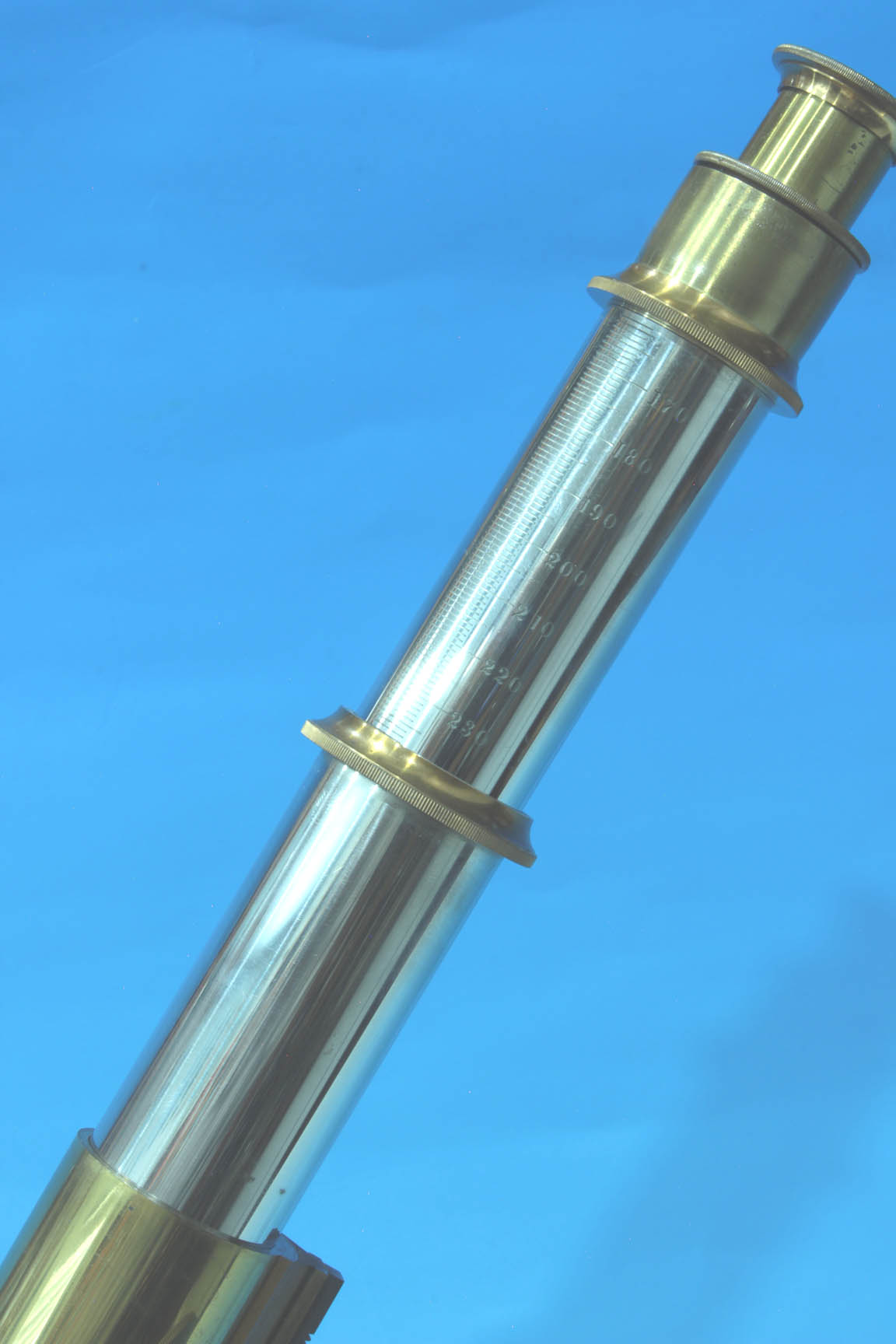
The main optical tube has 2 nickel-plated drawtubes inside. The outer draw tube is not calibrated, the inner one is calibrated every mm and labeled every ten mm from 170 to 230. These both ride in cloth linings of the tubes. The stage is rotatable with two removeable stage clips.
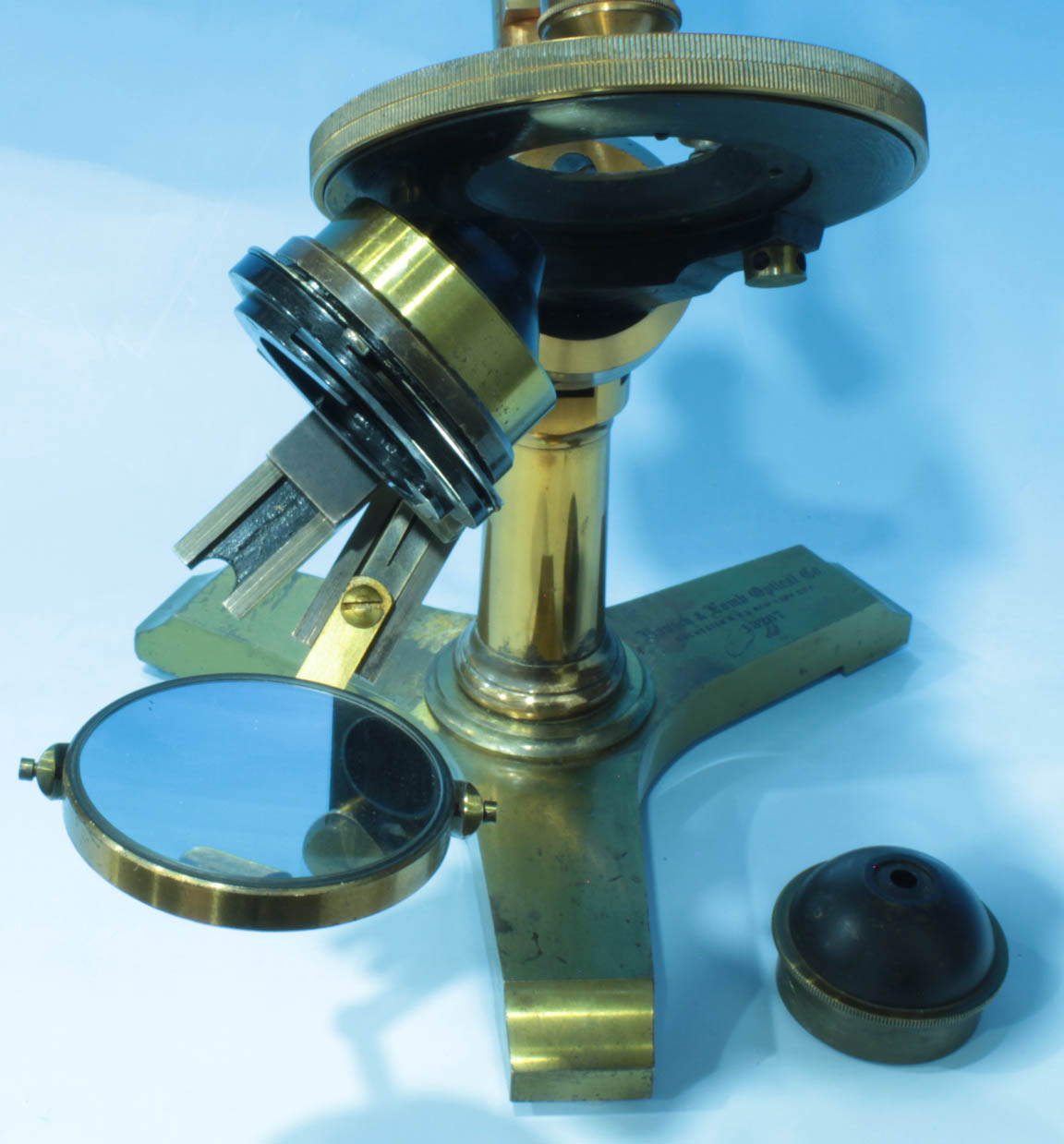

There are two separate swinging tailpieces, one for the condenser mounting and the other for the mirror. These rotate around the axis of the plane of the stage. There are silvered scales to indicate their angles. They can rotate together, or separately. There is a semicircular cutout at the bottom of the condenser mount tailpiece into which the stem for the mirror support fits to facilitate simultaneous movement of the mirror and condenser. The condenser mount can slide up or down its tailpiece. The mirror is gimbaled and jointed and can also slide up or down its tailpiece.
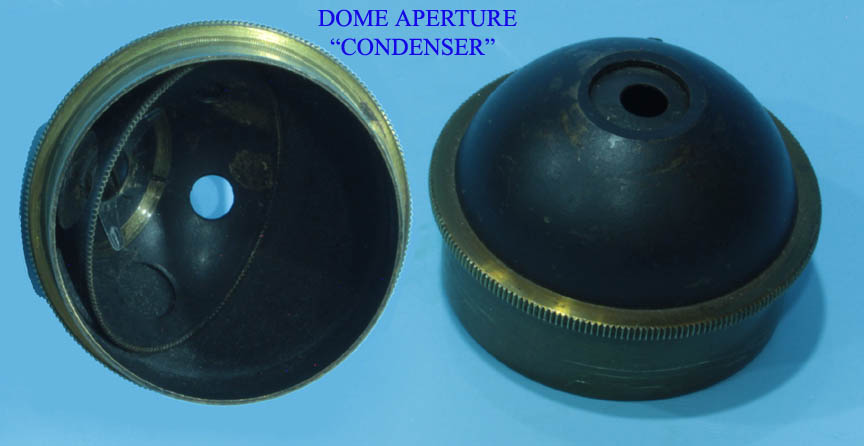
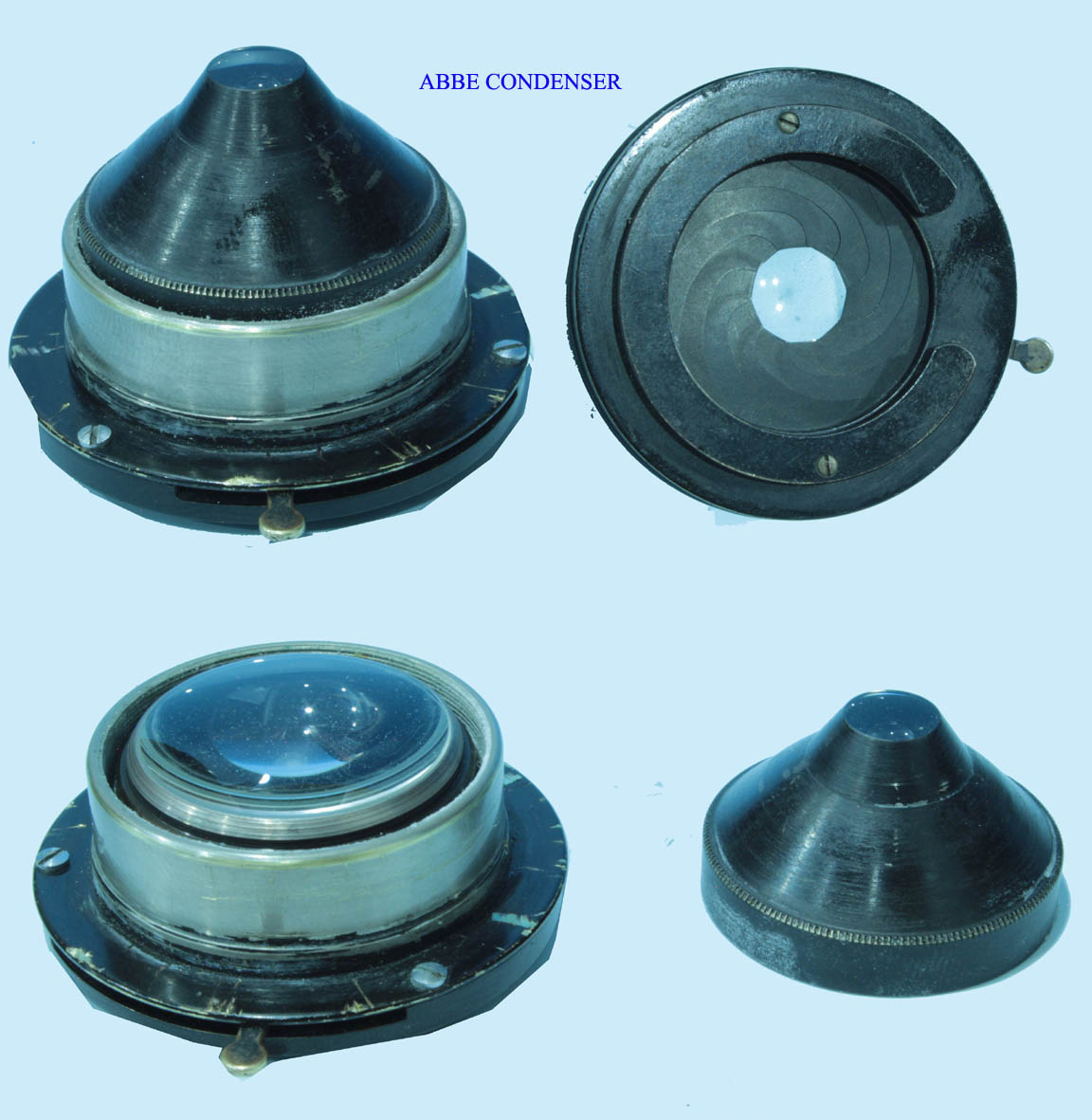
There are two condensers. The original dome diaphragm fits into the condenser mount sleeve from above, or an Abbe condenser with iris fits it from below.
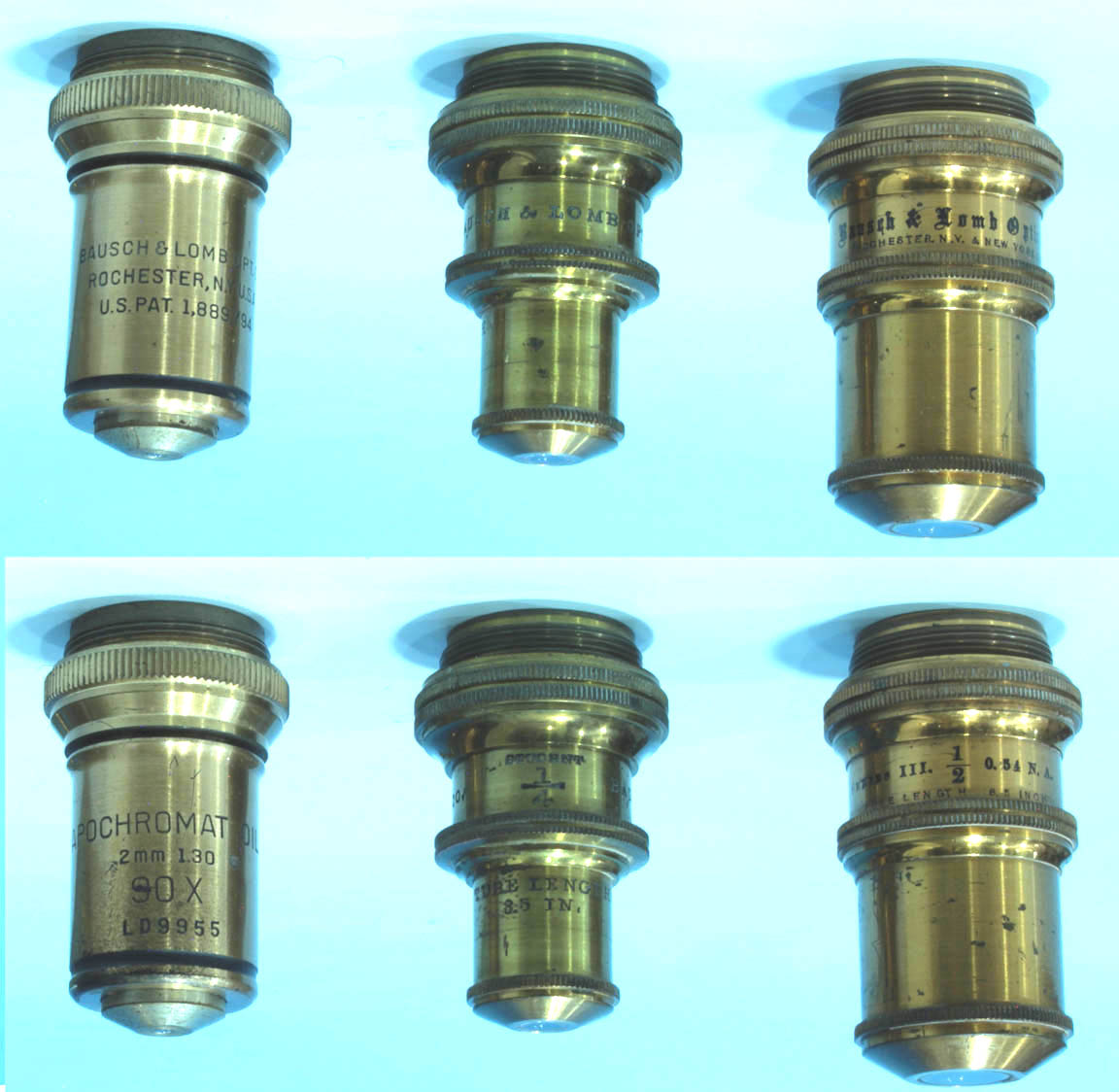
Besides the two condensers, the microscope has a single unlabeled top-hat eyepiece and three B & L objectives. These are of 1/2 inch, 1/4 inch. and 2 mm focal length, the last being an apochromatic oil immersion lens. The case is lacking.
HISTORY:
The Universal Model was apparently produced from 1884 to about 1896. During that time period it was the second largest model and cost less than half te price of the Professional Model. The 1884-1891 Universal model differed from the 1892 to 1895 model only in the configuration of the substage condenser mount. In the later model the ring was screwed to the sliding support, whereas in the earlier model, which is featured on this page, the substage support ring and its extension were one piece. A brass ring screws into this part in the microscpope on this page. The 1896 model had a continental-type of fine focusing mechanism. As shown in the 1893 listing for this model, it came with a simple diaphragm condenser. Options included an Abbe condenser, rack and pinion focusing to the substage condenser mount, double or triple nosepiece, centering to stage, centering to the substage, a fancier glass-fronted case and mechanical stage all at extra cost. The 1893 listing notes spiral focusing for the rack and pinion, but the model featured on this page, obviously earlier, has straight rack and pinion. Equipped with 3 objectives, 2 eyepieces and the Abbe condenser it sold for $148 in 1893. This would be about $5000 in 2024 dollars. Other than its larger size and weight, the Universal offered little advantage over the Investigator and Physician's Models of the time. All three of these had similar features, the only distinguishing features of the Universal being its size, and the fact that the mirror and condenser tailpieces could rotate separately from each other, the latter feature popularized by Bulloch but of questionable advantage. The Professional included advantageous features which included rack and pinion focusing of the substage condenser, centering of the substage condenser. It also included the ability to center the stage itself, a feature useful only for polarized light work. The rack and pinion substage and centering substage could both be ordered as an option for $25 in 1893, making the Universal model on par with the much more expensive Professional for the equivalent of $875 2024 dollars. Like the Professional, it could be equipped with a mechanical stage as well.
CONDITION:
This microscope is in overall fine condition. There are losses of lacquer to the foot in several places. Most of the rest of the microscope has only minimal losses of lacquer. The flat side of the mirror has bubbling of the silver; the concave side is excellent. There are some lacquer losses to the objectives but optically they are good. The Abbe condenser has some cosmetic scratches to the paint but works well. The nickel plating of the drawtubes is excellent. The mechanics are very good. In summary, considering it is about 132 years old, it is in very good shape.
 This large compound microscope is based on a flat tripod with a single pillar arising from its center. The tripod has a signature of
This large compound microscope is based on a flat tripod with a single pillar arising from its center. The tripod has a signature of  The coarse adjustment is by straight rack and pinion, the fine via micrometer screw acting on the upright part of the limb. Interestingly, the fine focus screw is a left handed thread so that turning it clockwise unscrews it and counterclockwise tightens it. The patent dates refer to the leaf spring fine focus first patented by Gundlach, as found on the B & L
The coarse adjustment is by straight rack and pinion, the fine via micrometer screw acting on the upright part of the limb. Interestingly, the fine focus screw is a left handed thread so that turning it clockwise unscrews it and counterclockwise tightens it. The patent dates refer to the leaf spring fine focus first patented by Gundlach, as found on the B & L 




